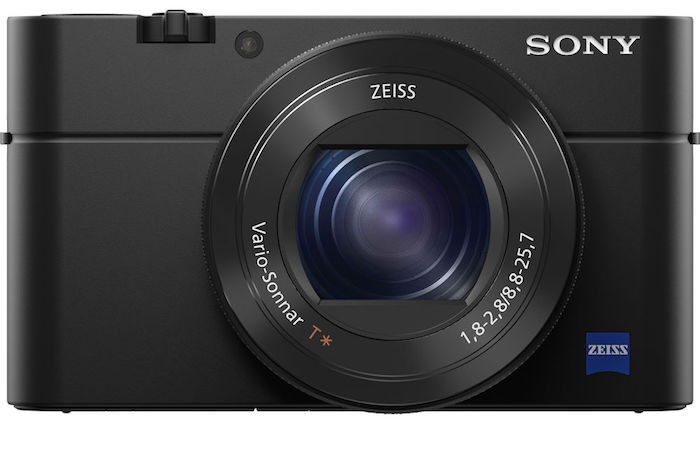It’s the fourth generation of the Sony Cyber-shot RX100 series now and the RX100 IV again takes the cake as the best camera you can put in your pocket.
The RX100 IV continues the tradition of using a large, 1.0-type sensor – again at 20.2MP – and adds the ability to capture incredible 4K video, as well as high frame rate (HFR) HD video. While the image sensor is the same resolution we’ve seen in its predecessors, it is the first to use a stacked sensor design.
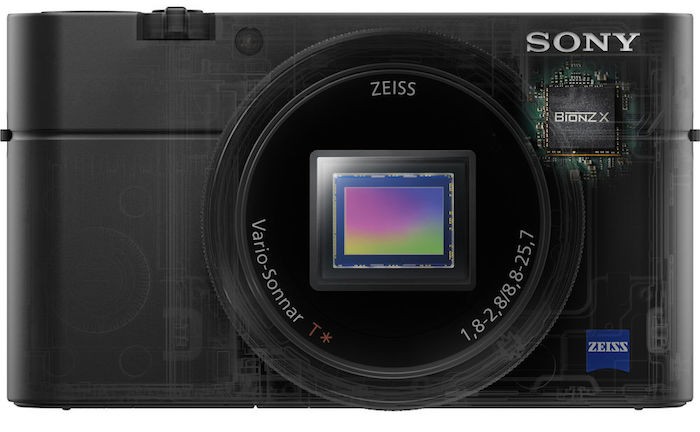
The newly developed Exmor RS stacked image sensor attaches the DRAM chip to the sensor, which provides us with the ability to buffer huge image data.
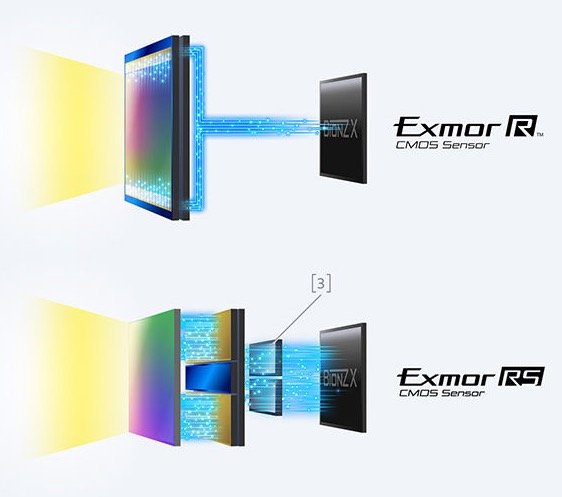
Sony Exmor R vs. Exmor RS Comparison
This is how we get the high speed readout that’s 5x faster than conventional CMOS sensor construction. As a result, we can shoot 4K video at normal frame rates using Sony’s XAVC-S codec and up to 960fps slow motion video with the RX100 IV, as well as capture still images at 16fps.
Sony RX100 IV Key Specs
- 20.1 MP 1″ Exmor RS BSI CMOS Sensor
- BIONZ X Image Processor
- Internal UHD 4K Video & S-Log2 Gamma
- Zeiss Vario-Sonnar T* f/1.8-2.8 Lens
- 24-70mm (35mm Equivalent)
- 2359k-Dot OLED Tru-Finder Pop-Up EVF
- 3.0″ 1229k-Dot Multi-Angle Xtra Fine LCD
- Slow Motion Video at 960 fps
- Built-In Wi-Fi Connectivity with NFC
- ISO 12800 and 16 fps Continuous Shooting
Shooting with the RX100 IV
Sony just keeps making these cameras better and better. The fact that I can fit this camera in my jeans pocket with all the features that it has is just incredible. It is a low-light monster of a pocket camera with a bright f/1.8-2.8 lens and great noise control all the way up to ISO 6400.
I found myself taking photos in a dim restaurant at ISO 6400 with no motion blur or camera shake blur. And the resulting images were great for my intended purpose of sharing with family and small prints.

Sony RX100 IV – ISO 6400 – 1-80 sec at f – 2.8
I mentioned the bright lens with a variable aperture of f/1.8-2.8, which is great. But it’s a trade-off.
Sony released the original RX100 and the RX100 II with a 24-100mm (equivalent) f/1.8-4.9 lens, which makes for a pretty slow lens at the telephoto end. When the RX100 III came out, Sony introduced its new 24-70mm (equivalent) f/1.8-2.8 lens and the same is present in the RX100 IV.
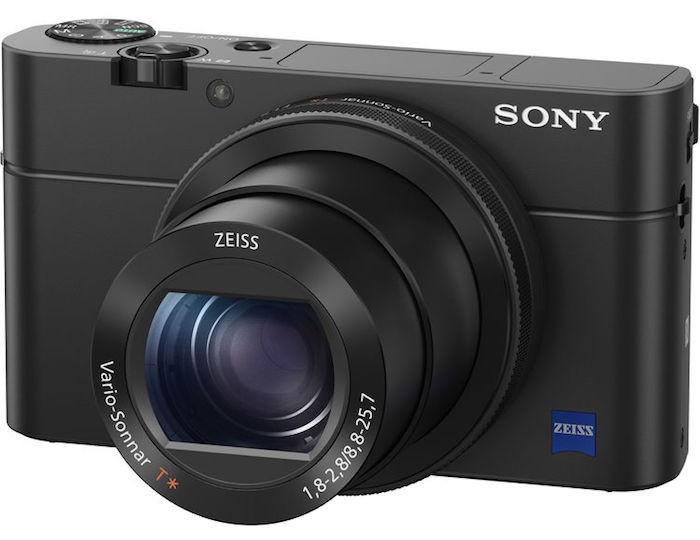
In a lot of cases, the 70mm telephoto end just didn’t feel long enough. At 70mm, you’re on the short end of a portrait focal length but the 100mm equivalent focal length would offer quite a bit more compression and reach if it were available.
We are talking about a pocket camera but it’s so freaking versatile that I had to point out that I missed the longer range. That said, Sony probably made the right decision by limiting the range to keep the aperture big and the camera size small. As I said earlier, it’s a trade off.
Battery life takes a noticeable hit in the RX100 IV – but mostly noticeable for those shooting video. The 4K and HFR video are using a whole lot of processing power, which is obviously going to tax the battery – and that battery is tiny. I never ran out of battery completely but I had a couple short outings where I wondered if I was going to get through it on just one charge. I would say picking up a spare battery is a must if you buy the RX100 IV.
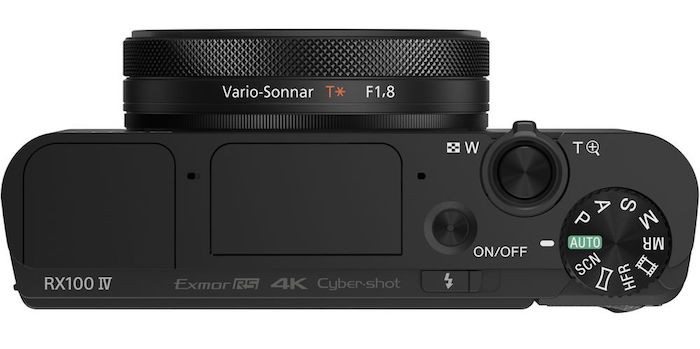
The control ring on the RX100 IV works just like its predecessors. It is a natural and intuitive operation with the placement around the lens barrel. The control ring is customizable for focus, ISO and exposure.
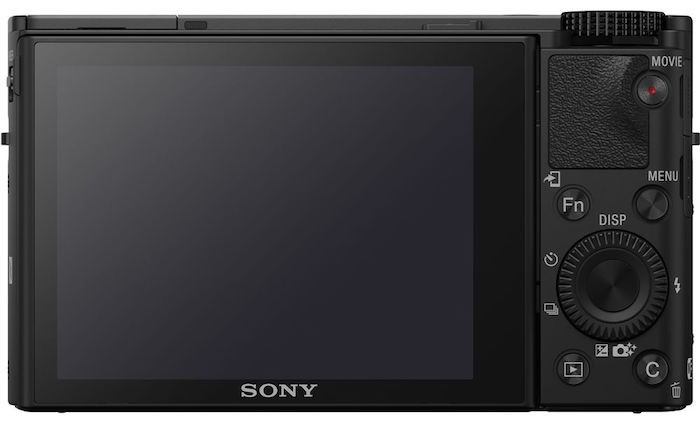
The rest of the controls are solid as well. A dedicated menu dial resides on top of the RX100 IV, while the back of the camera offers quick access to a variety of functions through the Fn button and four-way control dial. There are several customizable buttons on the back the camera – the C button, and the left, right and center buttons of the control wheel can be customized with a variety of options. The menu system is made up of tabs and pages and is pretty intuitive to follow.
In addition to base-level menu options that you expect in a camera, Sony continues to make camera apps for its cameras. The RX100 IV ships with five apps included. You can download more over WiFi connection, some of which are free and some are only available to purchase. The overall app experience feels a little clunky and not quite an Apple-level experience. I think it could have potential (even if you aren’t crazy about buying apps for cameras), but it needs a better user experience for sure.
The camera could use a little more tack on the grip area (there is no designated grip area on the front). I do recommend using the included wrist strap anytime you are shooting with it so that you save your thousand dollar pocket camera from a devastating drop. I never experienced any problems with gripping the camera to shoot but I kept the wrist leash on for peace of mind.
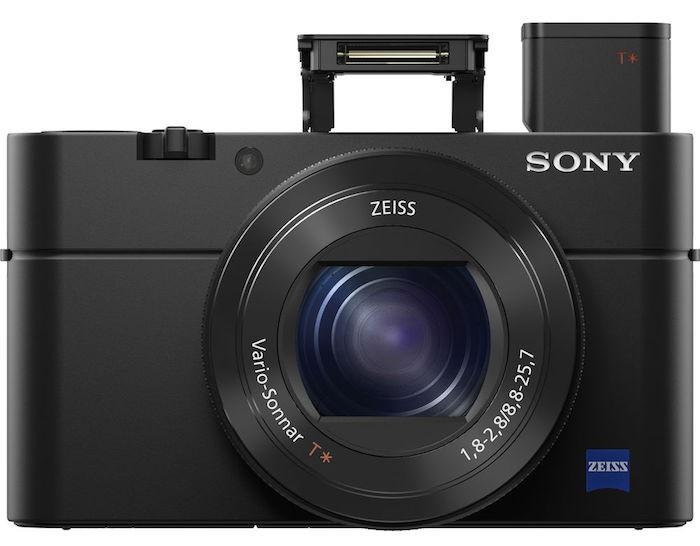
The pop-up EVF looks and works great. Kudos to Sony on including such an excellent EVF in such a small overall design in addition to a pop-up flash. This camera is really an engineering feat.
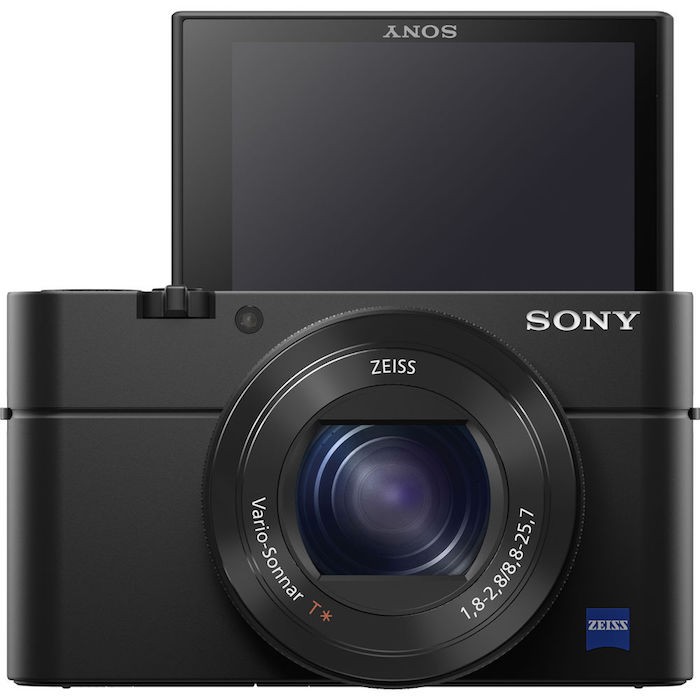
Rounding out the controls and external design is the 180° LCD screen. If I’m taking a selfie with my wife or kids, I’m usually going to use my iPhone. However, I used the RX100 a couple of times because I had it out and I thought that it worked quite well. I think the selfie shot may still be an overrated on these higher-end cameras but manufactures continue to include them.

Sony RX100 IV w/ LCD flipped for selfie shot – ISO 2000 – 1-30 sec at f – 1.8
Where I think the 180° LCD may be a huge win is with vloggers creating higher-end content for their YouTube channels. The 4K video gives you a whole lot of reframing options and much better quality than you’ll get with a front-facing iPhone camera or a computer’s webcam. The easy-to-use functionality of the RX100 IV makes it a contender against higher-end setups as well – even if you are using off-camera monitoring.
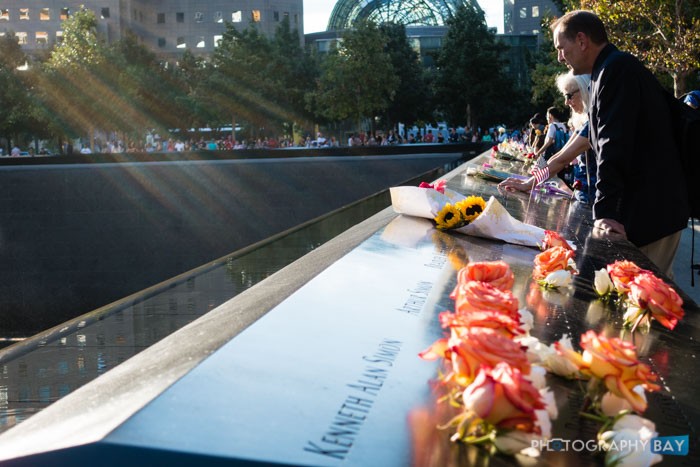
Sony RX100 IV – ISO 125 – 1-250 sec at f – 4.0
As I said earlier, the image quality is solid across the board for the RX100 IV. Thanks to the larger sensor size and processing, the shots are usable at higher ISOs – especially when capturing images in RAW format. There is just so much information that is recoverable for overexposed and underexposed images.
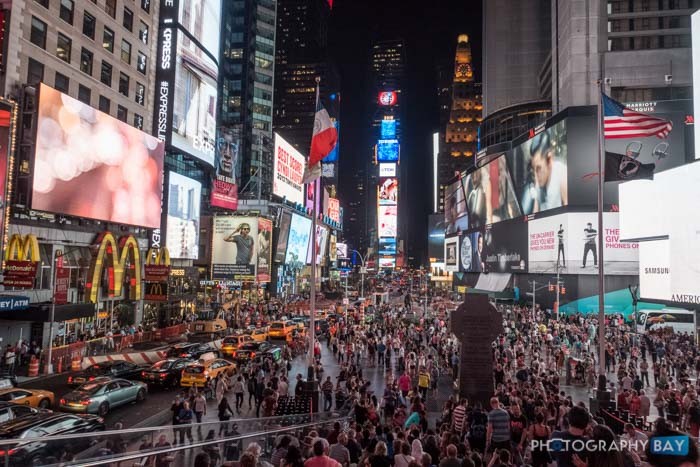
Sony RX100 IV – ISO 1600 – 1-25 sec at f – 4.0
Image stabilization works exceptionally well when operating at lower shutter speeds. I wanted to create a long-exposure motion blur with the fountains in the image below but I didn’t have a tripod with me. I braced as best as I could against the monument surface and took several shots. I was surprised that I had so many shots with sharp details even when viewed at 100%.
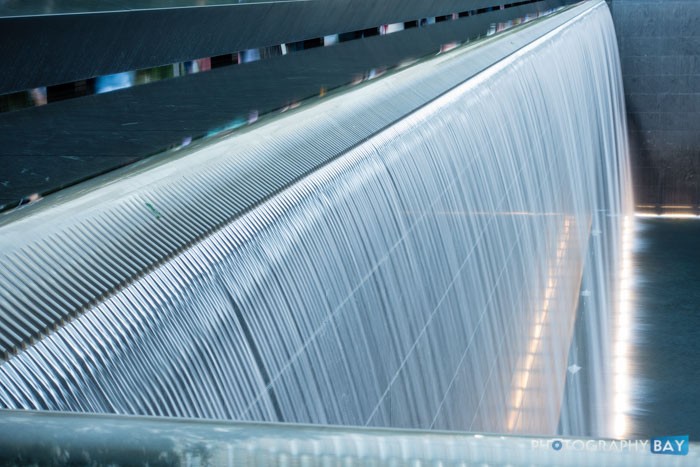
Sony RX100 IV – ISO 80 – 1.0 sec at f – 5.6

100% view of above shot a 1-sec exposure
Panoramas are easy to do with this camera as is the case with prior Sony cameras. Sony pioneered this Sweep Panorama mode, which we’ve seen trickle into other cameras and even our smartphones in recent years. I saw the first public demo of the feature in a room from of photography press geeks back at PMA 2009 when Sony introduced the Cyber-shot HX1.

Sony RX100 IV Sweep Panorama Mode Sample Image
The challenge, of course, is shooting scenes with minimal motion, or you end up with really weird motion artifacts like the bus in the above photo.
There are so many cool features inside the RX100 IV that it’s really hard to give each of them their due. A three-stop ND filter is another great feature that will help you keep your depth of field under control when shooting brighter scenes. It’s also a critical feature for shooting SLOG2 video, which has a minimum sensitivity setting at ISO 1600.
Another great feature is a max shutter speed of 1/32,000s, which gives you incredible action-stopping power. Of course, you’ll need a whole lot of light to take proper advantage of that but you can really freeze the moment when you do.
To sum up the experience of shooting with the RX100 IV, there’s everything to love and really nothing that’s a deal killer with this camera’s features and user-experience.
4K SLOG2 and Slow Motion Video on the RX100 IV
I’ve embedded a couple of video samples shot with the camera using the SLOG2 profile in 4K and a variety of slow motion frame rates. Above, you see a run-through of ungraded and graded clips (starting with the SLOG2 LUT) for a variety of low-light scenes.
Since I was shooting at night in Times Square for most of the shots, some of these clips are at pretty high ISO settings. Some shots dip into the ISO 6400 range. Of course, you start at ISO 1600 with SLOG2, which can be tough for some daylight shots – even when using the built-in ND filter.
The SLOG2 profile on a pocket camera is pretty amazing though. There is a ton of flexibility in the files with Sony’s XAVC codec.
The slow motion capabilities start with 60fps and 120fps frame rates at the full 1080p resolution (complete with audio). The higher frame rates come in the RX100 IV’s HFR mode.
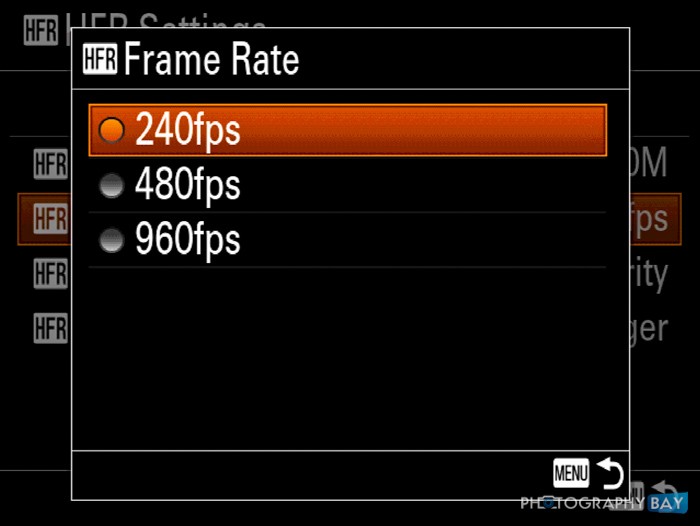
You get a short burst at either 240fps, 480fps or 960fps and can choose whether the camera will begin or end the burst of HFR footage when you press the record button.
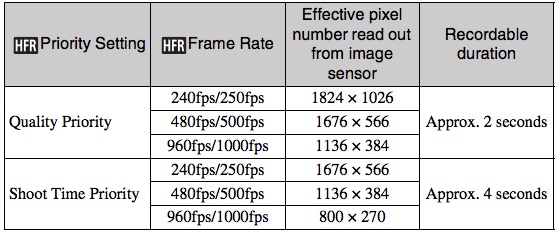
Setting to “Quality Priority” limits your recording time to just two seconds but is really necessary to prevent further reduction of the already lower resolution video. Even though the sensor readout is lower the 1080p, the RX100 IV scales the frame back up to 1920 x 1080, which leads to softer footage that faster you go.
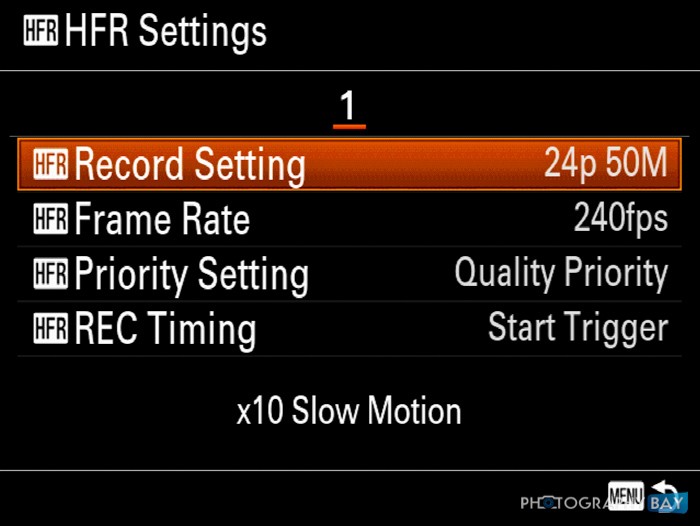
The camera then conforms these shots to a designated frame rate of 24p, 30p or 60p.
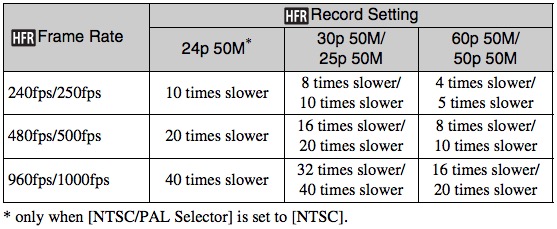
For the shots in the sample above, I chose to conform the to 24p for the slowest motion effect possible.
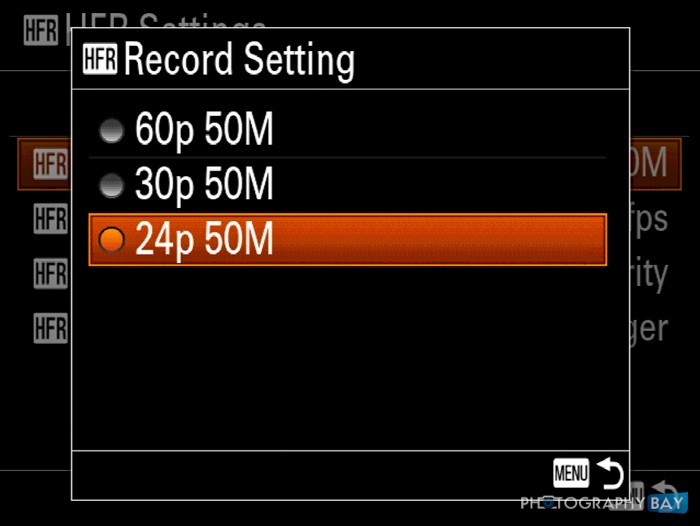
In addition to shooting these advanced 4K and HFR modes with grade-ready codecs, the RX100 IV takes great video for the everyday user with video color and high quality HD footage. The files and footage are compatible with more consumer-oriented video editing applications like iMovie and Premiere Elements. Geeks like me will love the power and flexibility of the advanced options; however, more casual users should rest assured that it will operate perfectly fine as a consumer video camera and arguably a better option than your smartphone.
While we’re talking about video capture on the RX100 IV, it’s probably a good time to get into memory card selection. There are a variety of memory cards that will technically work with the RX100 IV; however, there are very specific requirements for memory cards if you want to be able to use every feature on the RX100 IV’s video capture.
Specifically, you need to buy SDXC cards with a UHS Speed Class 3 rating. This can be a UHS-I or UHS-II bus type but the RX100 IV will only take advantage of the UHS-I bus speeds and requires a U3 rating. Two cards that I personally tested with the RX100 IV include the Transcend 64GB UHS-I Speed Class 3 card and Lexar’s 64GB Professional 2000x UHS-II Speed Class 3 card. For a broader explanation of SD card types and designations, see my prior article Demystifying SD Cards.
Conclusions
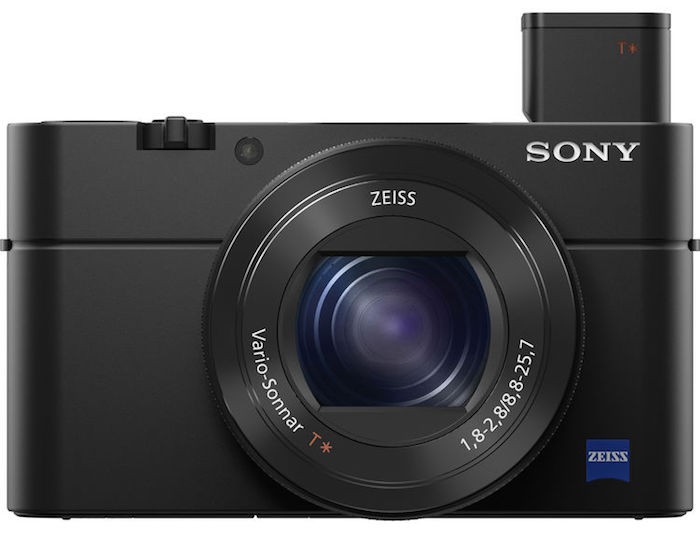
Simply put, the Sony RX100 IV is the best pocket camera money can buy today. Of course, it takes a lot of money to buy this camera, which is probably the only criticism that I have for the RX100 IV. At $950 retail, the potential audience is somewhat limited by the size of one’s wallet. That said, the RX100 IV epitomizes the future of compact cameras. We want it all and we want it to fit in our pockets.
If you are shopping for pocketable cameras and the budget allows, the RX100 IV should be high on your list of candidates.
Highly recommended.
The Sony RX100 IV is available from Photography Bay’s trusted retail partner, B&H Photo, at the following link:
By making your photography purchases at B&H Photo through these links, you are helping Photography Bay to continue bring quality camera tests, news and reviews. Thanks for your continued support.
Copyright/DMCA Notice: The RSS entry was originally published on Photography Bay. RSSID#794326
